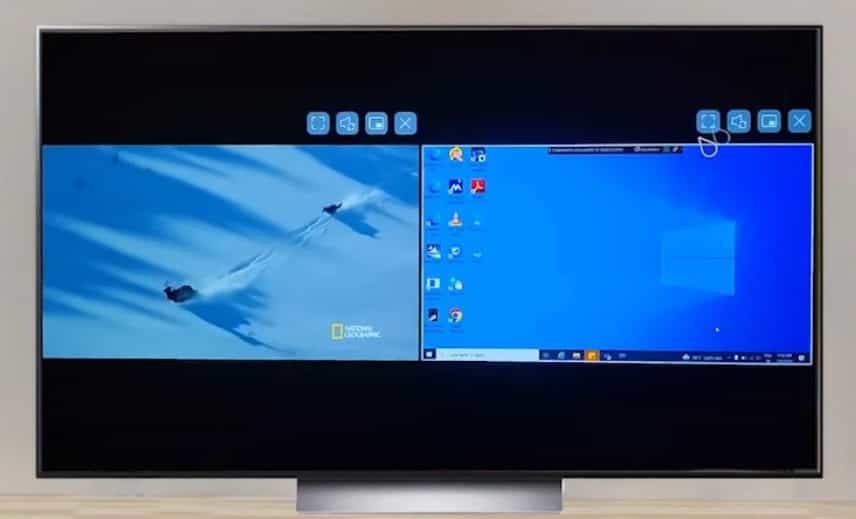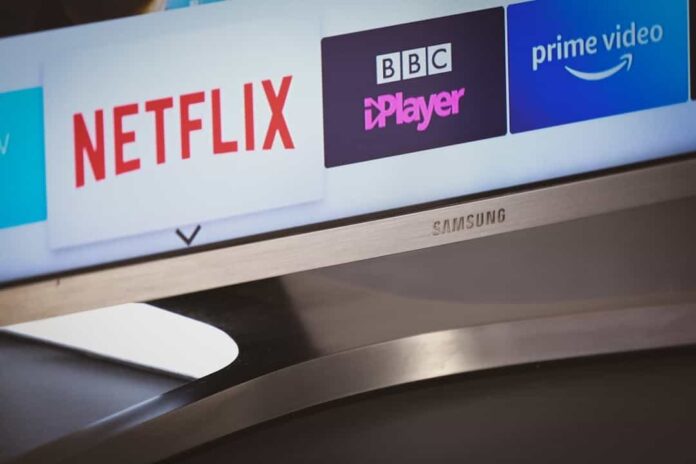What makes a television perfect today? Apart from its visual and audio quality, the ideal TV is expected to be intelligent and equipped with various useful features. Among the most popular functions of smart TVs, we’ll explore the ones listed below, which I believe are the best.
Top most demanded functions of smart TVs
- Picture in Picture: Picture in Picture is a feature that allows multiple screens to be open and visible, similar to what we do on computers with multiple windows. It enables us to watch a movie while keeping an eye on the season’s most significant derby or study and work on an image simultaneously (using the browser, for instance) and use the other screen for our leisure activities, such as playing a mini-game during our short breaks.
This is what a simple two-window PiP looks like

- Audio Only Mode: The “Audio Only Mode” is a feature that allows users to enjoy the sound quality of their television without consuming too much power. Many people prefer to listen to music on their TV rather than on simpler speakers but are hesitant due to high energy consumption. With this feature, users can play audio from various sources while keeping the TV panel off, resulting in significant energy savings.
Furthermore, it’s worth mentioning the benefits of having a smart and powerful speaker. Apart from enjoying music without having to turn on the TV screen, it can also serve as a voice assistant. With such capabilities, there’s hardly a need for additional smaller speakers in the same room, which can save us from clutter.
- Full HDR. This is an important feature to consider when shopping for a television. While many of us ask if a TV has HDR, we often forget to ask which type it supports. The two leading formats are Dolby Vision and HDR 10+. It’s best to look for models that are compatible with both, as this provides more options for reproducing high dynamic range content. Another convenient feature to have is the autogenre mode, which automatically switches between the available HDR and SDR formats. This makes it easier and more comfortable for the user to enjoy their preferred content without worrying about manually adjusting the settings.
In addition to the traditional features of a high-quality picture and sound, modern smart TVs often include built-in internet connectivity and a variety of applications. The most commonly sought-after functions include streaming capabilities, such as access to popular apps like Netflix, Amazon Prime, and Hulu, as well as the ability to connect to other smart devices in the home network.
Other popular features include voice control, which allows users to change channels, adjust the volume, or search for content without needing a remote control. Some smart TVs also include smart home integration, which allows the TV to function as a hub for controlling other smart devices in the home, such as lights or thermostats.
Another important feature is the ability to customize and personalize the viewing experience. This can include features like personalized recommendations based on viewing habits, the ability to create profiles for multiple users, or even the ability to change the interface and background to match personal preferences.
Overall, modern smart TVs offer a wide range of features that go beyond just good picture and sound quality. By incorporating internet connectivity, voice control, smart home integration, and other features, they aim to provide a more immersive and convenient viewing experience.

